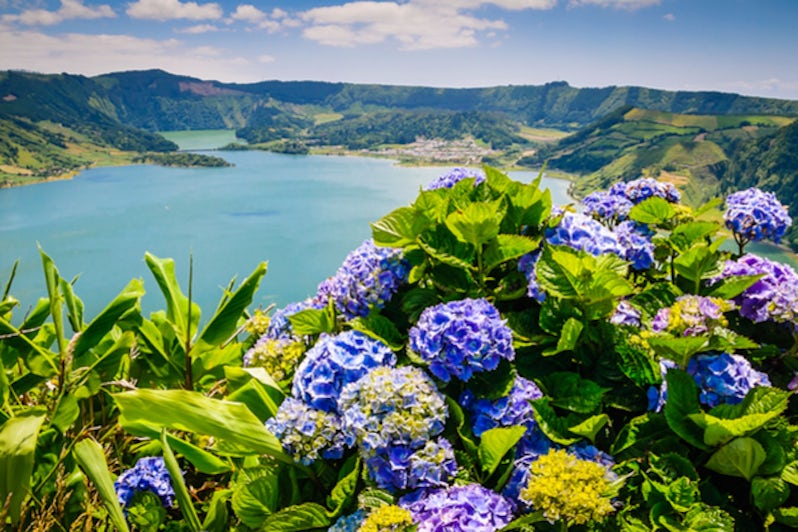
7 Tips for Cruises to the Azores: Know Before You Go



You may not have given much thought to needing tips for Azores cruises, but if a transatlantic crossing is on your bucket list, chances are good you’ll be in need of some advice. The Azores archipelago, which is located in the middle of the Atlantic Ocean, is featured on repositioning cruises of more than a dozen cruise lines, and stopping there is part of their bi-annual transatlantic crossings.
There are a handful of non-repositioning cruises that include these nine islands in the Portuguese archipelago as well. We went in search of Azores cruise itineraries, background information and must-know tips to make your Azores cruise delightful. Here are our seven tips for sailing on Azores cruises.
1. Study Up on Azores History Before Going
The Azores is a cluster of nine volcanic islands, lying west of the southern tip of Portugal in the North Atlantic. The archipelago, which is an autonomous region of Portugal, was known in the 14th century when the islands of Santa Maria and Sao Miguel were rediscovered in 1427 by the navigator Diogo de Silves. Official colonization began at this time, with settlers arriving from Portugal and other European countries.
In 1451, the navigator Diogo de Teive discovered the coast of Faial during his first voyage of exploration. The islands have a combination of traditional Portuguese buildings, breathtaking scenery with hedgerows and meadows covered with hydrangeas, pineapple plantations and a whopping population of two cows to every human.
Above all, the region's volcanic history is still in evidence, with craters and bubbling hot springs visible at close quarters. Shore excursions include opportunities to explore the history of the islands as well as their unique natural setting.
2. Book a Sightseeing Tour or a Private Tour on Your Azores Cruise
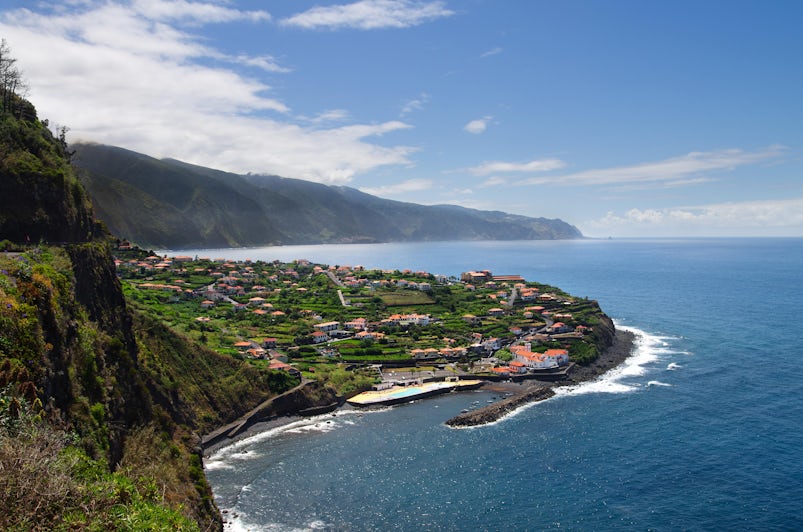
On that note, we advise cruisers visiting the Azores via cruise to either take a sightseeing tour as a shore excursion from the ship or book a private tour with a knowledgeable English-speaking driver/guide who can tailor-make the itinerary.
Note that the language spoken in the Azores is Portuguese, and the currency used on all the islands is the euro.
3. Familiarize Yourself with the Popular Azores Cruise Ports and the Many Sights to See
Cruises that include the Azores often call at Lisbon on Portugal’s mainland as well as Spanish ports like Malaga, Cadiz and Barcelona. Also look for cruises that visit both the Azores and Spain’s Canary Islands off the coast of Africa. Three of the most popular ports of call in the Azores are Ponta Delgada, Praia de Vitória and Horta.
History and Things to Do in Ponta Delgada
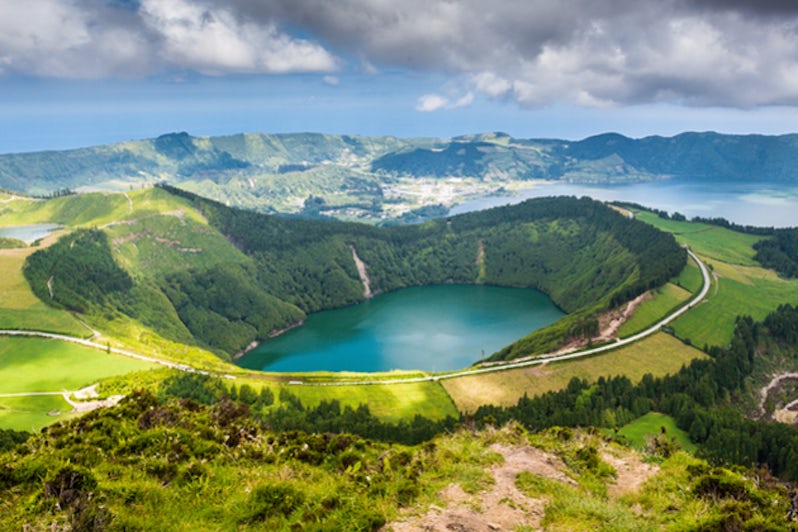
The main cruise port visited on transatlantic cruises is Ponta Delgada on the island of Sao Miguel. It has picturesque, whitewashed buildings with terracotta roofs. About 1,866 feet above sea level is the extinct volcano of Sete Cidades, its crater home to a magnificent twin lake consisting of two craters with different depths and colors -- one blue and the other bright green.
Sao Miguel is noted for its outstanding natural beauty, and no tour is complete without a visit to the Furnas Valley. The area is known for its volcanic activity, and here you can walk along pathways within a few inches of hot sulfur springs and steaming stretches of water. Another attraction on the island is the Fire Lake, situated in the crater of an extinct volcano and surrounded by mountains and lush vegetation.
In addition to sightseeing, there are many outdoor activities to enjoy on the islands including whale watching, surfing, golfing and hiking, and caves to explore. The beaches are mostly gray or black due to volcanic lava sliding into the sea after volcanic eruptions, but they are spacious and clean and with excellent facilities.
Ponta Delgado is sometimes the only stop in the Azores on repositioning cruises, but it’s definitely one not to miss, according to Cruise Critic members.
History and Things to Do in Praia de Vitória
Situated on the island of Terceira, Praia de Vitoria is a town with a stunning natural harbor overlooked by the 16th century fort of Santa Catarina. Also on Terceira is the historic city of Angra do Heroismo, now a UNESCO World Heritage Site. Dating back to the 15th century, it was an important port for Portuguese and Spanish merchants due to its sheltered harbor.
The extinct volcano Monte Brasil is situated 820 feet above sea level and emerged from the sea during an early underwater eruption. This natural protected park has spectacular views over the city. The Caldeira de Guilherme Moniz is the largest volcanic crater in the archipelago, with a perimeter of nine miles.
History and Things to Do in Horta
Horta is the fortified main town of the island of Faial, and is one of the liveliest towns in the Azores. It lies on the southeast coast of the island, with a beach of black volcanic sand. The marina is filled with yachts which stop there during their voyage across the Atlantic. The walls and footpaths of the marina are covered in paintings of some of these boats, put there by the owners as a memento of their visit.
In the center of the island is the Caldeira do Faial, the vast crater of the extinct volcano from which the island originated. A visit to Monte do Guia and a climb to the chapel gives a magnificent view of Faial and the neighboring island of Pico. In summer, the landscape is covered by a carpet of the pink, cream and mauve flowers of the Hortenses, which gained their name from the town.
4. The Best Time for an Azores Cruise Is Almost Anytime of the Year
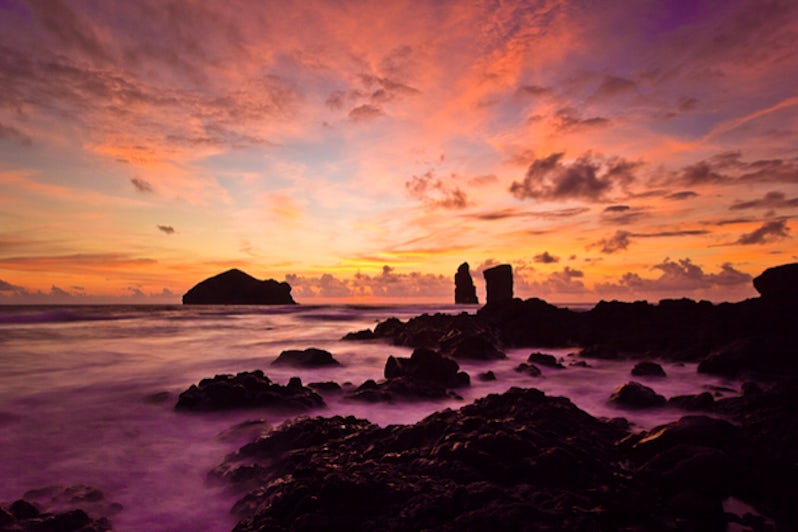
The Azores enjoy mild weather throughout the year, benefiting from the warm water of the Gulf Stream. Temperatures will average between 52 to 63 degrees Fahrenheit from November to March, 65 to 71 from April to June, and between 62 to 75 degrees between September to October. August is the warmest month and averages about 78 degrees Fahrenheit.
Weather can sometimes be fickle, with rain, sun and clouds all on the same day, but overall, the temperate climate means a holiday can be enjoyed at any time.
5. Choose a Repositioning Cruise that Stops in The Azores
Reasons for booking a repositioning cruise depend on the person, but the most popular ones are enjoying a one-way trek instead of a roundtrip cruise and/or saving money on your cruise (these cruises often offer lower cruise fares than others). If these advantages call to you, then try hunting for repositioning cruises to the Azores.
The list of cruise lines that have repositioning cruises that stop in the Azores is long and includes mainstream lines like Carnival, Royal Caribbean, Princess, Holland America, Norwegian and Celebrity. Premium lines stopping in the Azores on their crossings include Atlas, Windstar, Oceania and Star Clippers. Also look for Costa, MSC, Aida and even Disney.
6. Or Choose a Cruise with The Azores On Extended Itineraries
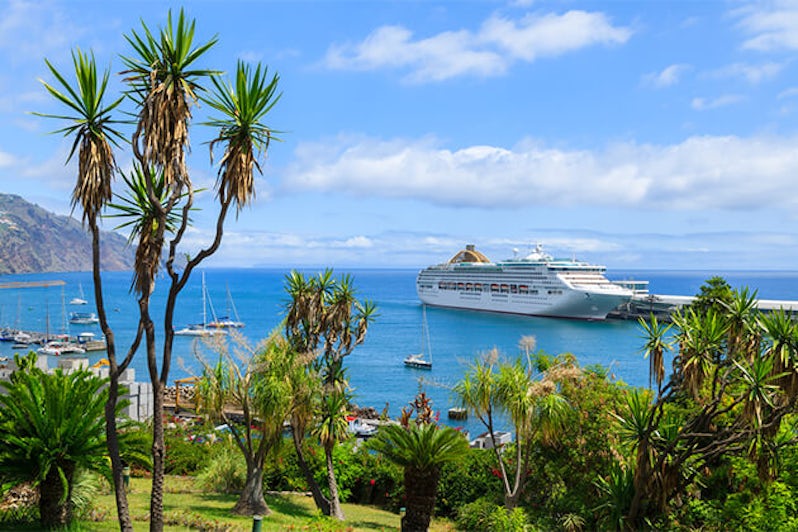
Not interested in a repositioning cruise that includes the Azores? No problem because there are plenty of cruises that include the Azores in their extended itineraries.
Frequently, you’ll find luxury lines like Silversea, Regent Seven Seas and Scenic with stops in The Azores on lengthy cruises. Also look for occasional Azores stops on Viking, Azamara and even Princess, all with at least a few non-repositioning itineraries. British lines with itineraries featuring multiple stops in the Azores include P&O, Ambassador, Saga, TUI and Fred. Olsen.
7. Pack Light Clothing Along with Waterproof Garments Before Going to the Azores
Light clothing is fine as it's very likely to be warm throughout the year but be sure to take a waterproof jacket or umbrella as there may be showers. Sturdy shoes are necessary (as they are on any European cruise) to navigate the cobbled streets, steps, volcanic craters and hot springs.